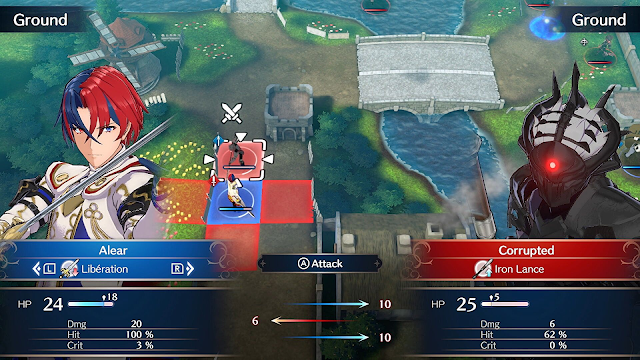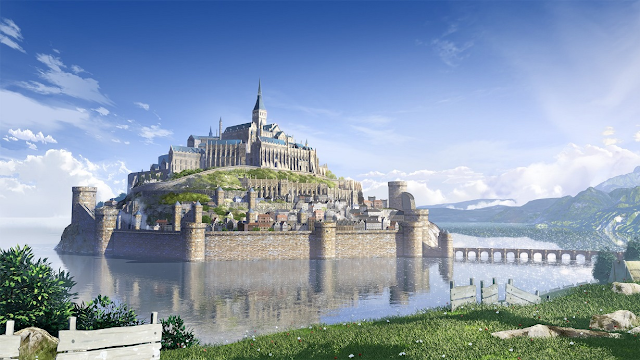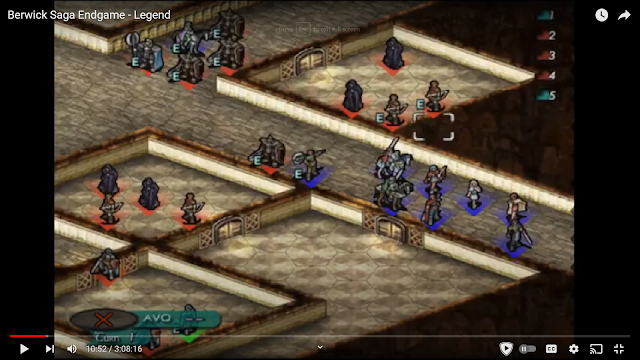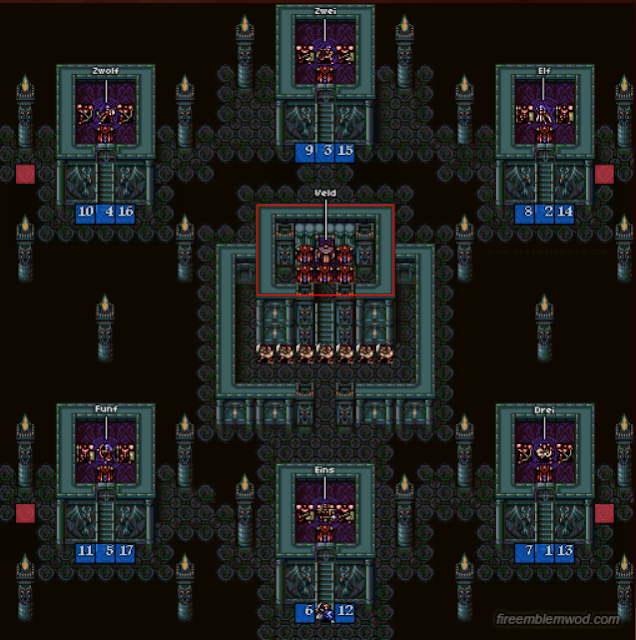+ The Difficulty: I am playing on Hard / Classic, and am pleasantly surprised that I've had to reset quite a bit on some chapters. I can't speak for Maddening, but Hard / Classic is both challenging and fair. I've never felt like the game screwed me over with b.s. Every reset was because my strategy was lacking. Speaking of a lack of bs, NO AMBUSH SPAWNS! It is good to see that this game rightfully steered of that awful mechanic.
+ Chain Stuff: Having certain enemies be "Backup" fighters that perform chain strikes, and having healers use Chain Guard is a pretty ingenious idea. It waters down the Pair Up mechanic from Awakening and Fates, and relegates it to special niches with certain characters. It can reward smart positioning without being super broken or dominating the game.
+ Skills: This game seems to have the best implementation of personal skills out of all the games that use them. I find myself actively making decisions based on them, and they seem to reward smart positioning. Stuff like Alear getting Camilla's personal skill, Framme and Clanne's personal skills providing boosts to Alear's stats, Celine's personal skill boosting recovery items, etc. It's also helpful that Engage will show you just what skills are in effect, which helps to remind the player that they're there, and that they're making an impact on the gameplay.
+ Weapons and Forging: While I'm still a fan of weapon durability, I don't find myself missing it too much here. My first impression is that the weapons are balanced. I could be wrong on this, and it will later turn out that there was the "One True Weapon to Break Them All", but so far there doesn't seem to be any massive imbalance in weaponry. No weapon feels too strong, or feels too weak. Again, this could be subject to change but the game is off to a good start on this point.
I still haven't managed to wrap my head around how forging works, but it also comes off as more balanced than previous titles. I'm curious what everyone else thinks. Is there something about forging that I'm missing, or is the mechanic more balanced here than in previous titles?
Negatives
+ Underwhelming Map Design: So far, I haven't been impressed by the map design in this game. I can't think of a map that I've hated, but I also can't think of any maps that I love either. Chapter 5 gets my vote for being the best designed map that I've played so far. The thief getting the treasure was actually difficult to get to, and I had to smartly use Vander with Sigurd's Override to get to him in time. The enemy reinforcements make choke pointing a bad idea, which means that the map itself works incredibly well with the Break mechanic.
Chapter 4 is also pretty good. Your army is split up into two teams, and has to work together to get to the enemy boss, the enemy reinforcements are well positioned and succeed at putting pressure on the player, and the enemy composition is pretty good too. Overall, it's a pretty good map.
The Chapter where you get Anna is also pretty good. Again, you have to split your army up, and the thieves gunning for the treasure help to put some pressure on the player.
The main flaw of may of these maps is that they don't have enough turtle disincentives. You can generally play slowly and methodically progress through some of the enemies just fine. I'll also add that the first three maps of the game are obvious tutorial maps, which get progressively more boring when replaying the game, and weren't even that good on a first playthrough.
I wish the map had more objectives than just "Kill Boss" with a sprinkling of Rout maps.
+ Boss Resurrection Stone: This game brought back the Three Houses mechanic where you have to kill certain bosses more than once. It makes boss fights more tedious (though to be fair, it does make them slightly more challenging) and drags out the pacing of the fight.
__________________________________________________
Final Thoughts: Not a fan of the story or the characters, but the gameplay gets more right than wrong. I'm happy to see the gameplay succeed on multiple levels. I'm hoping that the map quality improves, and that we get more objectives than either "Kill Boss" or "Rout".
I like the gameplay. I'm not super hyped / over the moon about it, but I like it. It's way too early for me to declare it "The Best Gameplay Since (Insert FE Title Here)" but I can say that the gameplay is a positive that the game has going for it.
Keep in mind, that I could totally change my mind about this as I get further in. Who knows what the later chapters will bring?





















